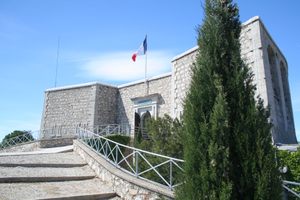Operation Dragoon, known in French as the Débarquement de Provence (or Provence Landing), is a little-known event in English-speaking countries, yet it plays a disproportionate role in the French perception of World War II. Starting on August 15, 1944, the Allies launched a naval assault on southern France to liberate the country more quickly. (It was originally supposed to occur in tandem with D-Day in June but was delayed.)
Unlike D-Day, a large portion of the forces involved were Free French led by General Jean de Lattre de Tassigny. The operation was a great success, liberating most of Southern France in just four weeks as German resistance proved weak. It was not without its controversies, however, as some argued it enabled the Soviets to seize Eastern Europe.
On the 20th anniversary of Operation Dragoon, the Mémorial du Débarquement et de la Libération de Provence (or Memorial to the Provence Landing and Liberation) was inaugurated at the Beaumont Tower, a 19th-century military fort on Mont Faron overlooking the naval port of Toulon. (The actual landing took place about 43 miles east, around Saint-Tropez.) Then-president Charles de Gaulle intended the memorial to symbolize France’s role in its own liberation, rather than merely being a passive actor in the war.
Since then, the memorial has expanded to commemorate soldiers from the French colonies and all others who helped liberate the country. The Mont Faron Memorial is considered one of France’s nine “high places of national memory”, a designation given to the nation’s most important war memorials. It also houses a museum that extensively documents Operation Dragoon.
